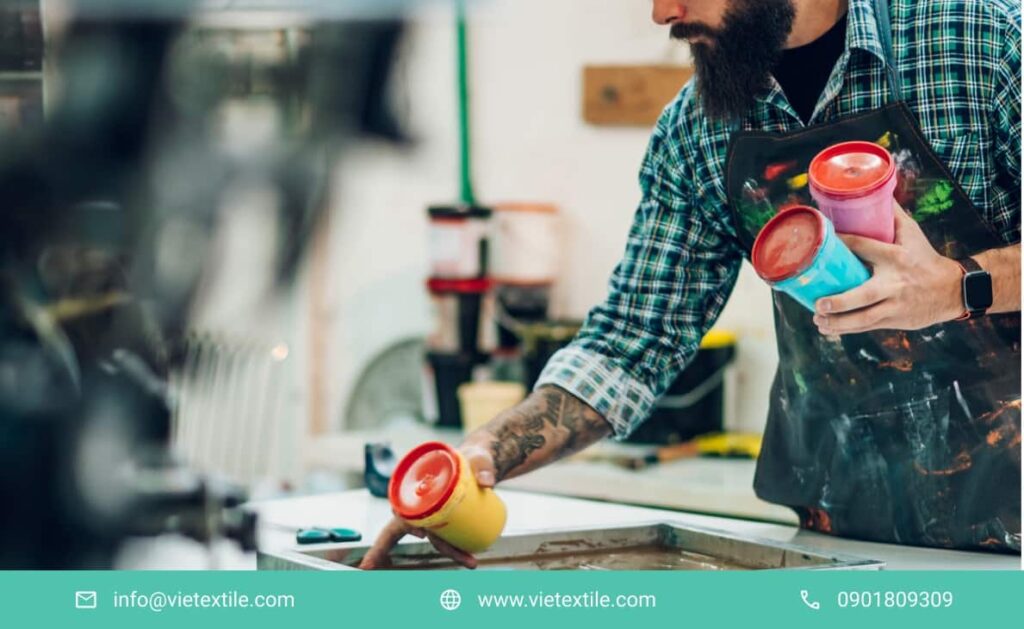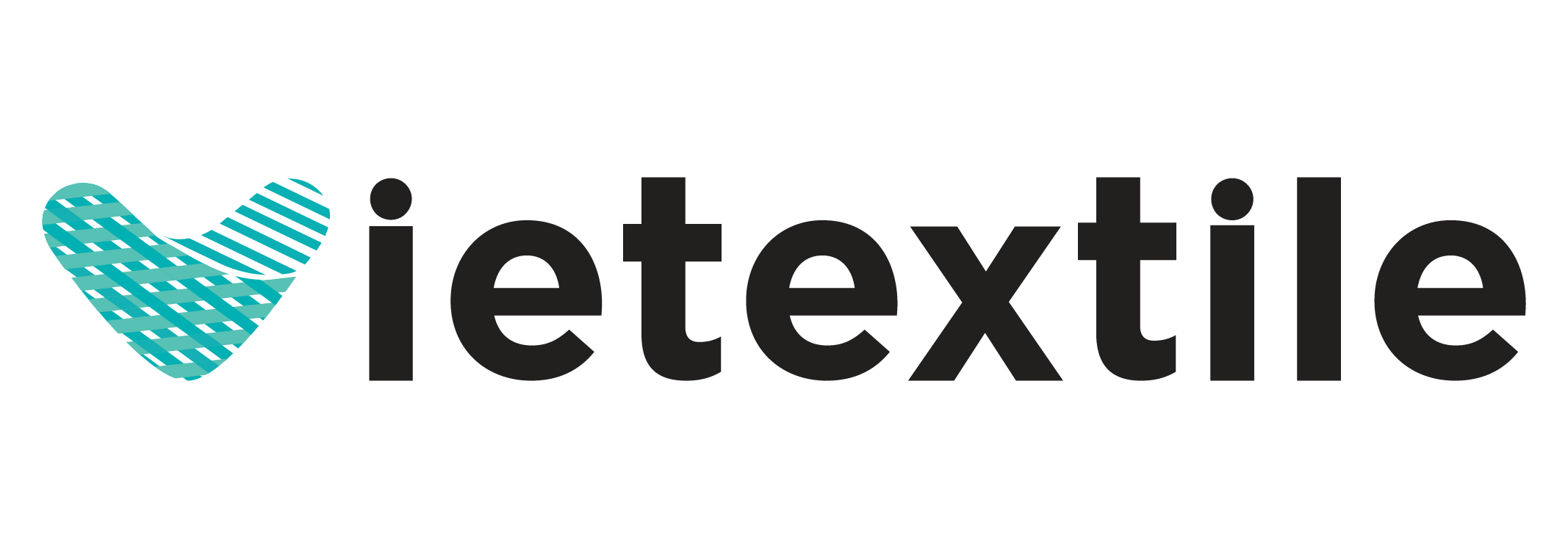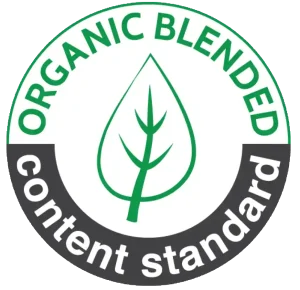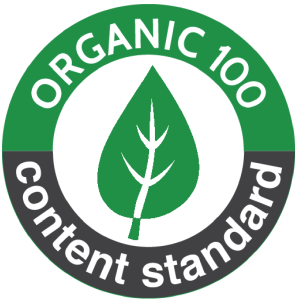In the textile dyeing industry, especially concerning Cellulose fibers (such as Cotton, Linen, Viscose), the choice of dye group is a strategic decision that directly impacts the final product quality, production cost, and environmental footprint. The three most common dye groups are Vat Dyes, Reactive Dyes, and Direct Dyes.
Each group has a unique fixation mechanism, offering different advantages and disadvantages regarding color fastness, reproducibility, and process complexity. This VieTextile article will delve into the analysis of these three groups, with a special focus on Vat Dyes—the pinnacle of color fastness—along with in-depth analyses of technological processes and sustainability factors.

1. Operating Mechanism and Dye Identification
Nội dung tóm tắt
ToggleThe color fixation mechanism is the most fundamental factor distinguishing these three types of dyes.
1.1. Vat Dyes – Reduction and Oxidation Mechanism
Identification: Vat Dyes are water-insoluble compounds, typically Anthraquinone or Indigoid derivatives. They must undergo a three-step chemical process for color fixation. Mechanism:
- Reduction: The insoluble dye is treated with a strong reducing agent (usually Sodium Hydrosulfite – Na2S2O4) and an alkaline medium (NaOH) to convert it into the soluble Leucobase form, which can penetrate the fiber.
- Absorption: This soluble Leucobase form diffuses into the Cellulose fiber.
- Oxidation: After absorption, the fabric is treated with an oxidizing agent (air or chemical oxidizers like H2O2) to convert the Leucobase back into its original insoluble dye form, which is permanently trapped inside the polymer structure of the fiber. This soluble/insoluble state conversion is the key to the absolute fastness of Vat Dyes.
1.2. Reactive Dyes – Covalent Bond Mechanism
Identification: Reactive Dyes are water-soluble dyes containing a Reactive Group capable of forming a covalent bond with the Hydroxyl (-OH) group of the Cellulose fiber. Mechanism:
- Absorption and Fixation: The Reactive Dye molecule diffuses into the fiber. In an alkaline medium (usually Sodium Carbonate – Na2CO3, or Soda Ash), the dye’s reactive group undergoes a covalent reaction with the fiber, forming an extremely durable chemical bond.
- Hydrolysis: A portion of the reactive dye hydrolyzes (reacts with water instead of the fiber) and loses its ability to fix the color. This hydrolyzed dye must be thoroughly washed off to ensure adequate Washing Fastness.
1.3. Direct Dyes – Physical Binding Mechanism
Identification: Direct Dyes are water-soluble dyes, typically possessing a long, flat, and symmetrical structure. Mechanism:
- Absorption: Direct Dye molecules are absorbed directly onto the surface of the Cellulose fiber in a boiling water bath (Atmospheric Dyeing).
- Fixation: They are held in the fiber primarily by weak forces (Hydrogen bonds and Van der Waals forces). The long, flat structure maximizes the contact area, optimizing the binding forces.
- Enhancement: Salt (NaCl or Na2SO4) is added to reduce the dye’s solubility in the solution, “pushing” it more strongly into the fiber.
2. Comparison of Color Fastness – The Decisive Quality Factor
Color fastness is the most crucial criterion, where these three dye groups exhibit clear differences.
| Fastness Criterion | Vat Dyes | Reactive Dyes | Direct Dyes |
| Washing Fastness | Excellent (Grade 5/5) | Very Good (Grade 4-5/5) | Poor (Grade 2-3/5) |
| Rubbing Fastness | Very Good (Grade 4-5/5) | Good (Grade 3-4/5) | Average (Grade 3/5) |
| Light Fastness | Superior (Grade 7-8/8) | Good (Grade 4-6/8) | Poor (Grade 3-4/8) |
| Binding Mechanism | Physical trapping, chemical conversion | Covalent bond | Weak Van der Waals forces |
2.1. The Class of Vat Dyes
Vat Dyes deliver the highest level of fastness (Superior Fastness) because the insoluble dye is “caged” inside the fiber structure (Pigment-like Fastness). Notably, they are the unique choice for products requiring:
- Chlorine Fastness: They withstand strong oxidizing agents like Chlorine (used in medical or industrial laundering) that other types cannot.
- High Light Fastness: Often reaching grades 7-8, essential for curtains, upholstery, or outdoor uniforms.
2.2. The Position of Reactive Dyes
Reactive Dyes offer a good balance between high color fastness and medium cost, thanks to the covalent bond. The biggest challenge is ensuring 100\% removal of the hydrolyzed dye, which, if not thoroughly washed, severely compromises washing fastness.
2.3. Limitations of Direct Dyes
The poor color fastness of Direct Dyes is the main limitation. Although it can be improved by post-dyeing fixing treatments (After-treatment), they cannot reach the fastness level of Reactive Dyes or Vat Dyes.
3. Comparison of Cost and Process Complexity
Cost and production efficiency are key economic factors in the selection.
| Economic & Process Criterion | Vat Dyes | Reactive Dyes | Direct Dyes |
| Dye Price (Active Ingredient) | Highest | Medium | Lowest |
| Auxiliary Chemical Cost | Very High (Reducing agent Na2S2O4, Alkali NaOH) | High (Large amounts of Salt NaCl, Alkali Na2CO3) | Low (Mainly Salt) |
| Process Time (Batch) | Long (4 – 6 hours) | Medium (2 – 4 hours) | Short (2 – 3 hours) |
| Risk of Dyeing Defects | High (Insufficient reduction/oxidation) | Medium (Incomplete washing off) | Low (Percolation errors) |
4. In-Depth Analysis of Vat Dyes Applications

Vat Dyes are the dye group with the highest technical requirements. Controlling chemical variables is the crucial factor.
4.1. Mandatory Applications (Military & Workwear)
Military uniforms and protective workwear demand absolutely stable colors. The fastness of Vat Dyes ensures that the color will not change under the impact of strong industrial chemicals or aggressive washing.
4.2. Deep Shades Dyeing Capability and Bronzing Challenge
Vat Dyes provide excellent coverage and color depth. However, when dyeing deep shades (Black, Navy), if excess dye is not washed off, it can crystallize on the fiber surface, causing a “Bronzing” phenomenon (the surface has a metallic or bronze sheen), which ruins the color texture. A compulsory acid rinse and soaping procedure after dyeing are required for correction.
4.3. Control of Redox Potential
In the Vat Dye bath, the Redox Potential (oxidation-reduction potential) must be strictly controlled.
- Too Low: (Too much reducing agent) causes the color to be over-reduced, wasting chemicals and potentially damaging the fiber.
- Too High: (Insufficient reducing agent) leads to incomplete reduction; the insoluble dye precipitates, resulting in uneven color defects and sludge.
4.4. Continuous Pad-Steam Technology for Vat Dyes
For mass production, Vat Dyes are used in the continuous Pad-Steam dyeing process.
- Pad: The fabric is padded with the pre-reduced dye solution (Leucobase).
- Steam: The fabric is steamed in a Steam Chamber at 102-105C for 30-60 seconds to ensure deep dye penetration and fixation.
- Oxidation and Soaping: The fabric passes through oxidation baths, followed by soaping baths to remove excess dye and improve color fastness.
5. In-Depth Analysis of Reactive Dyes
Reactive Dyes are the most popular choice for Cotton today due to their good balance between fastness and cost.
5.1. Classification by Reactive Group
Reactive Dyes are classified by the structure of their Reactive Group:
- Monochlorotriazine (MCT): Requires higher temperature and alkali (usually 80C).
- Vinyl Sulfone (VS): Requires lower temperature (usually 60C).
- Bifunctional (MCT/VS): Most commonly used because it operates over a wide temperature range, offering higher fixation efficiency and reducing hydrolysis.
5.2. The O-E (Exhaustion) and F-F (Fixation) Issue
The efficiency of Reactive Dyes is measured by two parameters:
- O-E (Exhaustion): The percentage of dye absorbed into the fiber (exhausted from the solution) relative to the initial amount.
- F-F (Fixation): The percentage of dye chemically fixed (covalent reaction) relative to the amount absorbed.
The goal is to optimize both O-E and F-F to minimize the amount of hydrolyzed (unfixed dye) that must be discharged, saving cost and protecting the environment.
5.3. Continuous Cold Pad-Batch (CPB) Dyeing Technology
This is the most common continuous dyeing process for Reactive Dyes.
- Pad: The fabric is padded with the solution of Reactive Dye and alkali (NaOH or Na2CO3).
- Batch: The fabric is rolled into a large batch and wrapped tightly with PE film.
- Storage: The batch is stored at room temperature (25-35C) for 4-24 hours to allow the dye to react slowly and chemically fix. CPB significantly saves energy compared to high-temperature Batch Dyeing.
6. In-Depth Analysis of Direct Dyes
Direct Dyes are used when cost is the primary priority and low fastness requirements are acceptable.
6.1. Mechanism by Van der Waals Forces
The length and flatness of the Direct Dye molecule help them optimize Van der Waals bonding with the Cellulose fiber. However, the weak nature of this bond makes the color easily washable.
6.2. Salt and Temperature Requirements
- Salt: Salt (NaCl) increases the ionic strength, pushing the Direct Dye from the solution onto the fiber.
- Temperature: Dyeing at boiling temperature (95-100C) accelerates the dye’s penetration.
6.3. Post-Dyeing Fixing Treatment (After-Treatment)
To improve the washing fastness of Direct Dyes to an acceptable level for basic garments, post-dyeing treatment is mandatory.
- Cationic Chemicals: Cationic Fixing Agents are used. These agents create a film or cross-links with the dye on the fiber surface, increasing the binding force between the dye and the fiber, reducing washout.
7. Comprehensive Assessment of Cost and Reproducibility
7.1. Total Cost of Ownership (TCO)
Although the raw material cost of Vat Dyes is the highest, its TCO can be acceptable when considering the Re-dyeing Cost.
- Defect Repair Cost: Direct and Reactive Dyes, if errors occur, are expensive to fix (time, chemicals, energy). Vat Dyes, with their inherent fastness, have the lowest re-dyeing error rate.
7.2. Washing Off Optimization – A Technical Highlight
This is the most critical step for both Vat Dyes and Reactive Dyes.
- Vat Dyes: Washing off must completely remove excess alkali (NaOH) and reducing agent (Na2S2O4) so the color is not altered later.
- Reactive Dyes: Washing off must completely remove the hydrolyzed dye. Poor washing off is the leading cause of Staining (uneven patches) and poor Rubbing Fastness.
8. Environmental Impact and Sustainability Solutions
Environmental impact is an indispensable factor in the dye selection decision.
8.1. Vat Dyes: The Burden of Reducing Agents
The use of Sodium Hydrosulfite (Na2S2O4) generates a large amount of Sulfate and Sulfite in the wastewater, increasing COD.
- Solution: Research into using Electrochemical Reduction systems or Organic Reducing Agents to replace Hydrosulfite.
8.2. Reactive Dyes: The Salt and Efficiency Problem
Large amounts of salt (NaCl) increase salinity (TDS), affecting freshwater ecosystems.
- Sustainable Solution: Development and use of Low-Salt/Zero-Salt Reactive Dyes or Reactive Dyes with very high fixation efficiency (F-F) to reduce the amount of hydrolyzed dye and the necessary salt volume.
8.3. Direct Dyes: Color Washout
Due to weak bonds, Direct Dyes discharge dark color into the wastewater. Although their chemical structure is often less toxic than Reactive Dyes, the high color concentration causes visual pollution and obstructs light for microorganisms.
9. Quality Control (QC) and Testing Standards

QC control is necessary to verify the dye choice.
9.1. Color Fastness Standards (ISO & AATCC)
| Criterion | Common Testing Method | Minimum Requirement (High-End Product) | Best Performing Dye Type |
| Washing Fastness | ISO 105 C06 or AATCC 61 | Grade 4.0 or higher | Vat Dyes, Reactive Dyes |
| Light Fastness | ISO 105 B02 or AATCC 16 | Grade 4.0 (Fashion), Grade 7.0 (Outdoor) | Vat Dyes |
| Rubbing Fastness (Dry/Wet) | ISO 105 X12 or AATCC 8 | Grade 4.0 (Dry), Grade 3.0 (Wet) | Vat Dyes |
| Hydrolysis/Washout | Washing-off Test (Reactive Only) | Hydrolysis amount < 5\% | Bifunctional Reactive Dyes |
9.2. Dusting Control
Especially for powder Vat Dyes, the Dusting Index must be controlled. Dye dust is not only a health hazard but also affects the accuracy of chemical weighing.
10. Advanced Dyeing Technology and Color Creation
10.1. Denim Dyeing (Indigo – The Typical Vat Dye)
Indigo is the most widely used Vat Dye in the world.
- Technique: Indigo is dyed via the continuous Dye Range process with multiple successive reduction baths (Multiple Dip-Multiple Nip) to achieve the desired depth of color without losing rubbing fastness.
- Characteristic: Indigo only fixes on the fiber surface, creating the characteristic fading effect of Denim when washed.
10.2. Direct Dye Alternative: Sulphur Dyes
When deep black/brown is needed with a lower cost than Vat Dyes but higher fastness than Direct Dyes, Sulphur Dyes are an alternative solution.
- Mechanism: Sulphur Dyes are also insoluble dyes that require reduction (Sodium Sulfide) to become soluble, followed by re-oxidation, similar to Vat Dyes, but with a lower cost and limited color range.
11. Frequently Asked Questions (FAQ) About Dyes
1. Question: Which colors absolutely require Vat Dyes to achieve fastness? Answer: Deep Navy, Industrial Black, Military Green (Olive Green), and colors requiring the highest light fastness (scale 7-8). These colors often demand high chlorine and temperature fastness that other dyes cannot meet.
2. Question: Why must Vat Dyes undergo an oxidation process after dyeing? Answer: During the dyeing process, Vat Dyes are in the Leucobase form (water-soluble) to penetrate the fiber. The oxidation process (by air or chemical) converts the Leucobase back to the original, insoluble dye form, permanently trapping it in the fiber.
3. Question: What impact does the large amount of salt used by Reactive Dyes have on wastewater? Answer: The large amount of salt (mainly NaCl or Na2SO4) significantly increases the salinity (TDS) in the wastewater. This changes the Osmotic Pressure of the environment, negatively affecting river and lake ecosystems.
4. Question: How can Direct Dyes improve washing fastness? Answer: Direct Dyes usually improve fastness through an After-treatment fixing process after dyeing. Fixing agents (often cationic derivatives) create a film or cross-links with the dye, increasing the binding force between the dye and the fiber, reducing washout.
5. Question: Do Vat Dyes have a brilliant color range? Answer: Vat Dyes generally have a deep, muted, and dark color range, which is very durable. They do not yield bright, brilliant colors like Reactive or Acid Dyes. The reds and yellows of Vat Dyes tend towards earth tones or darker shades.
6. Question: What is the difference in operating cost between Vat Dyes and Reactive Dyes? Answer: The operating cost for Vat Dyes is higher because, besides the expensive dye price, it requires strong (expensive) reducing chemicals and a longer, more complex dyeing process with a higher risk of technical errors. Reactive Dyes, although using more salt, have a simpler and faster process.
7. Question: Can Vat Dyes be used for Polyester fiber? Answer: Technically, yes, but it is often less efficient than Disperse Dyes. However, in cases of Polyester/Cotton blends, Vat Dyes are often chosen to dye the Cotton component, followed by Disperse Dyes for the Polyester component, to ensure the highest, uniform fastness for both components.
8. Question: Why is controlling the Redox Potential important for Vat Dyes? Answer: Controlling the Redox Potential ensures that the Vat Dye is completely and optimally converted into the soluble Leucobase form in the alkaline environment. Incorrect Redox Potential can lead to insufficient reduction (causing color precipitation) or excessive reduction (wasting chemicals and degrading the color).
12. FINAL CONCLUSION AND FUTURE OUTLOOK
The choice between Vat Dyes, Reactive Dyes, and Direct Dyes is a multidimensional optimization problem, extending beyond raw material cost to include Total Cost of Ownership (TCO), absolute quality requirements, and environmental responsibility.
- Vat Dyes: Always maintains its position as the ultimate in color fastness, a mandatory choice for safety, military, and outdoor/heavy-duty applications where light fastness and chlorine resistance are vital. The high process cost is balanced by a low error rate, offsetting the overall cost.
- Reactive Dyes: The most balanced choice for the fashion industry and mass garments, due to its wide color range, good fastness (covalent bond), and highly optimizable dyeing processes through technologies like Cold Pad-Batch. The biggest current challenge is finding solutions for the salt and wastewater issues.
- Direct Dyes: Remains the most economical solution for products with low color fastness requirements, mainly leveraging the advantages of raw material cost and a simple process.
Future Outlook: The sustainability trend is driving the development of Zero-Salt Reactive Dyes and environmentally friendly reduction technologies for Vat Dyes. Competition is no longer solely about the dye cost but about the ability to deliver a dyeing process with low TDS (Total Dissolved Solids), low COD, and the highest reproducibility. A deep understanding of the mechanism and process of each dye type will be the decisive competitive advantage for modern textile manufacturers.
VieTextile provides dyeing technology solutions for Cellulose fibers, including HTHP dyeing machine equipment and automatic chemical dosing systems to optimize Reactive and Vat Dye processes.
Contact Information:
Hotline: 0901 809 309
Email: info@vietextile.com
Website: https://vietextile.com










